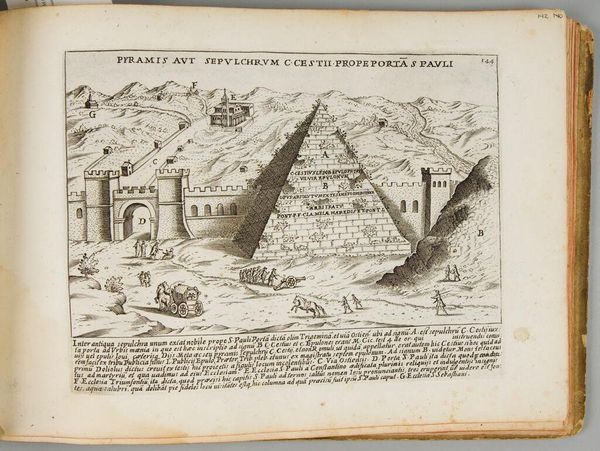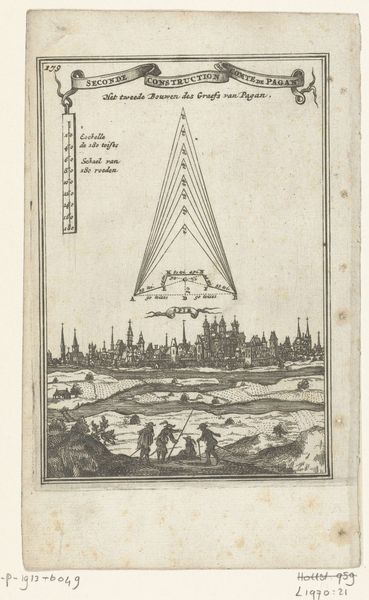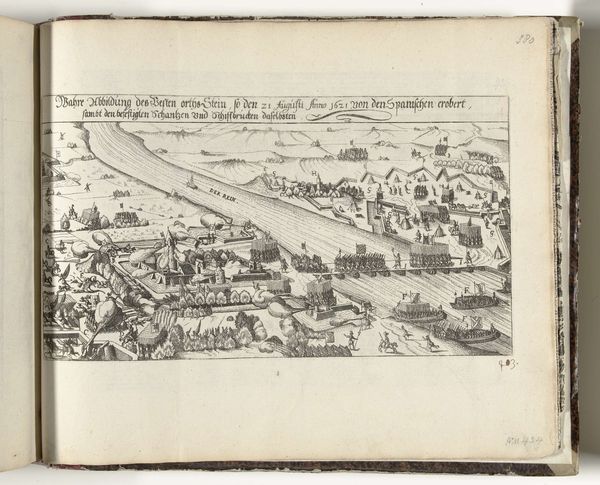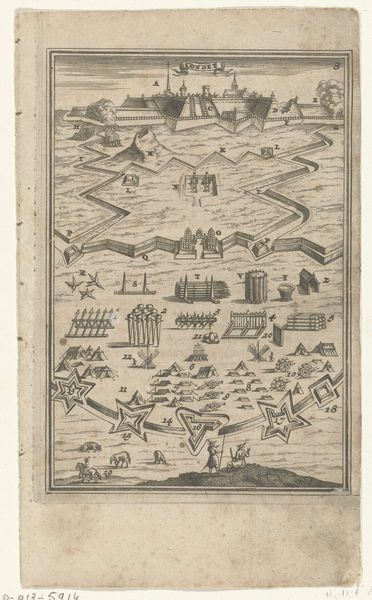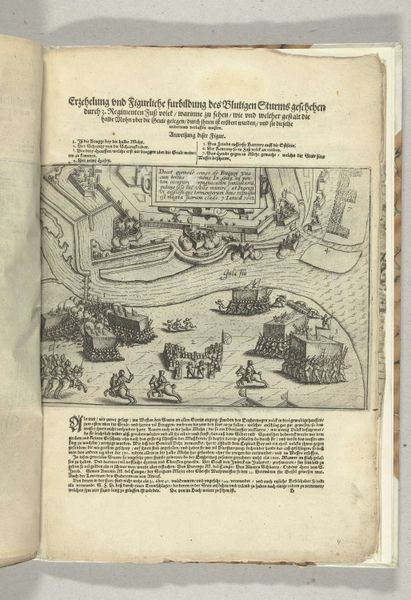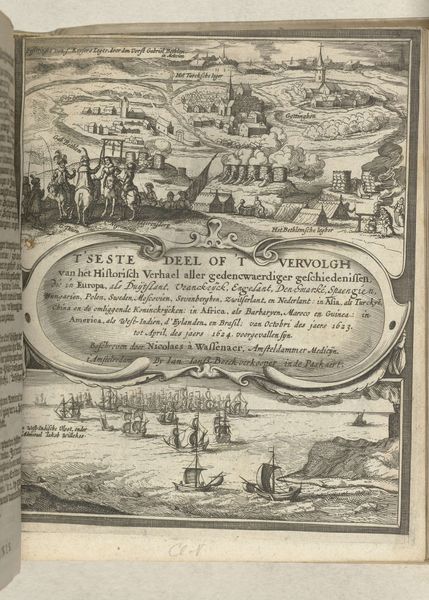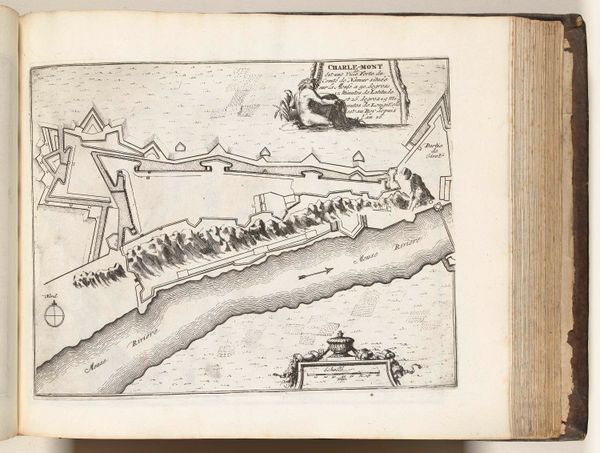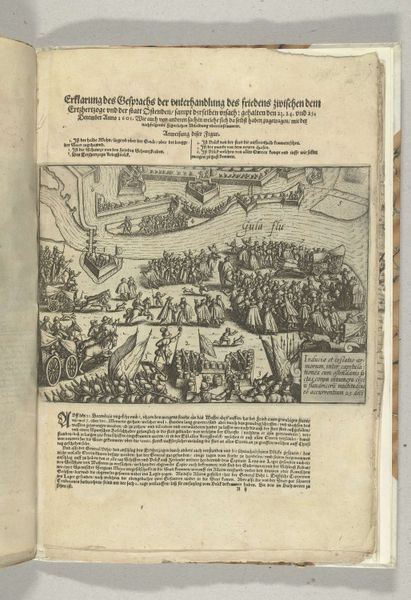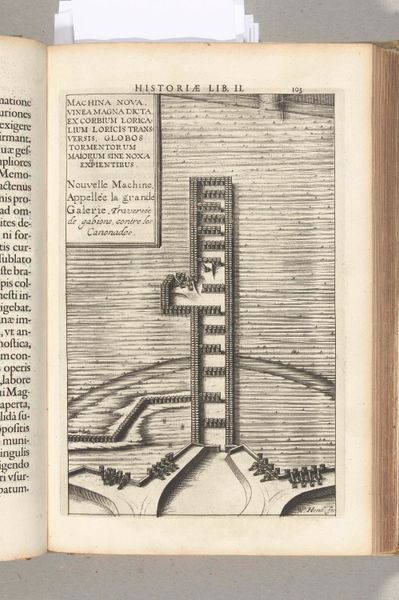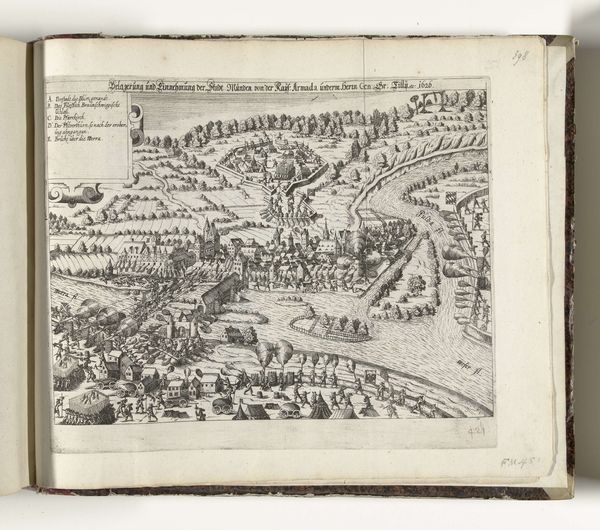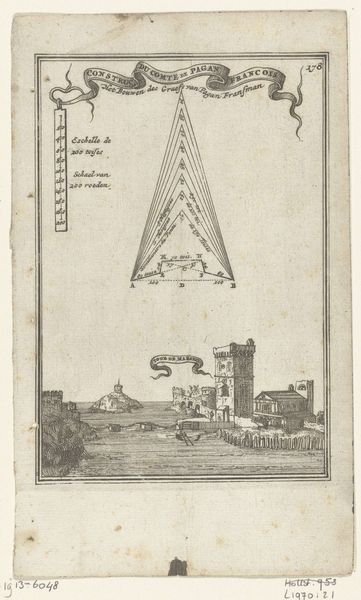
print, engraving
#
medieval
# print
#
11_renaissance
#
line
#
cityscape
#
history-painting
#
northern-renaissance
#
engraving
Dimensions: height 177 mm, width 235 mm, height 350 mm, width 240 mm
Copyright: Rijks Museum: Open Domain
Curator: Here we have a print titled, "Siege of Ostend: the storm bridge of Targone, 1604". This engraving is currently held at the Rijksmuseum, and the piece is by an anonymous artist from around 1604. Editor: My first thought? This looks like an illustration straight out of someone's medieval war-game manual—equal parts frightening and hilariously impractical. It gives you a true sense of both technological invention and almost comical execution. Curator: Well, in terms of technology, it's definitely meant to capture that spirit of Renaissance ingenuity during wartime! We see that quite literally with a diagrammatic aesthetic. Editor: Right, you almost can’t miss how much labor it takes. Look at how many draft animals are roped up to make this invention work. Not only that, the final structure feels almost secondary to this print; like, how the knowledge gets passed around among builders takes precedence over some final object of display. Curator: Absolutely, you're zoning in on that production aspect which this piece displays proudly. Consider also how prints at the time played an educational and somewhat propagandistic role. It was like, "Here's the cool, scary thing we have!"—a technological flex, essentially. Editor: So a flex made with lines and pressure from an etching press. Tell me, who was consuming something like this, back then? Curator: Certainly the upper classes, military personnel, people in positions of power interested in such developments... Remember this comes during the Dutch Revolt— a pivotal time for technological innovation on the battlefield. The Northern Renaissance focus on detail lends itself particularly well here. Editor: And given its function, wouldn’t it make sense that "accuracy" became a style? I’d reckon they’re paying pretty close attention to things like the tensile strength of rope, the weight distribution of such a massive moving structure... Curator: Indeed, and despite its age and practical origin, its continued ability to intrigue lies perhaps in its raw, unfettered visualisation of invention as a product itself—the genesis and execution together captured and then shared, reproduced, almost endlessly across Europe at that time... I’m seeing in it the past's image of the future. Editor: I suppose, that’s fair. For me, though, its appeal lives most vividly in just how much sweat and timber would have needed to be invested, and the sense of anxiety that surely came with it—both the promise and real danger in such grand gestures of progress and ruin.
Comments
No comments
Be the first to comment and join the conversation on the ultimate creative platform.
